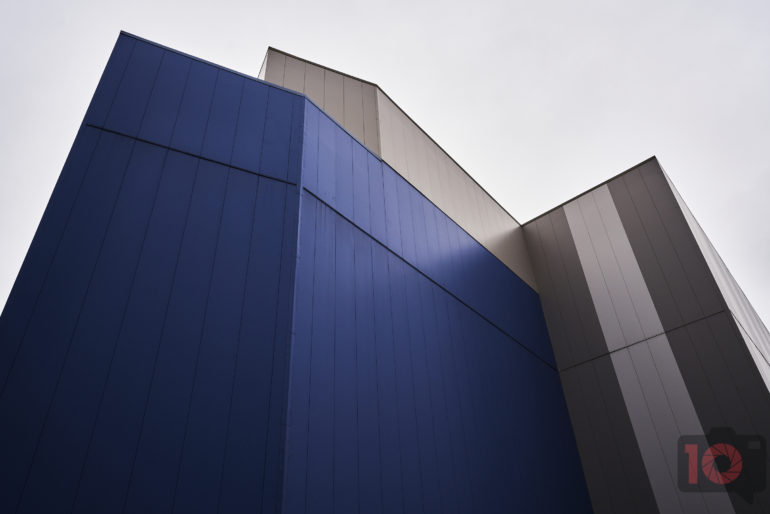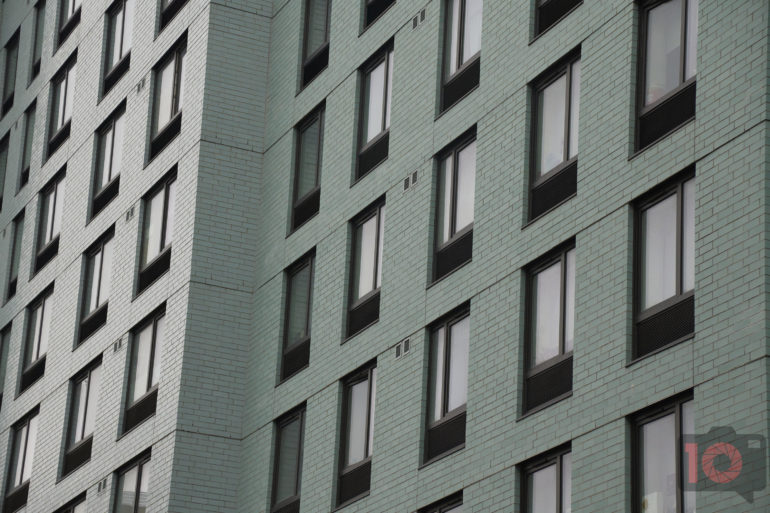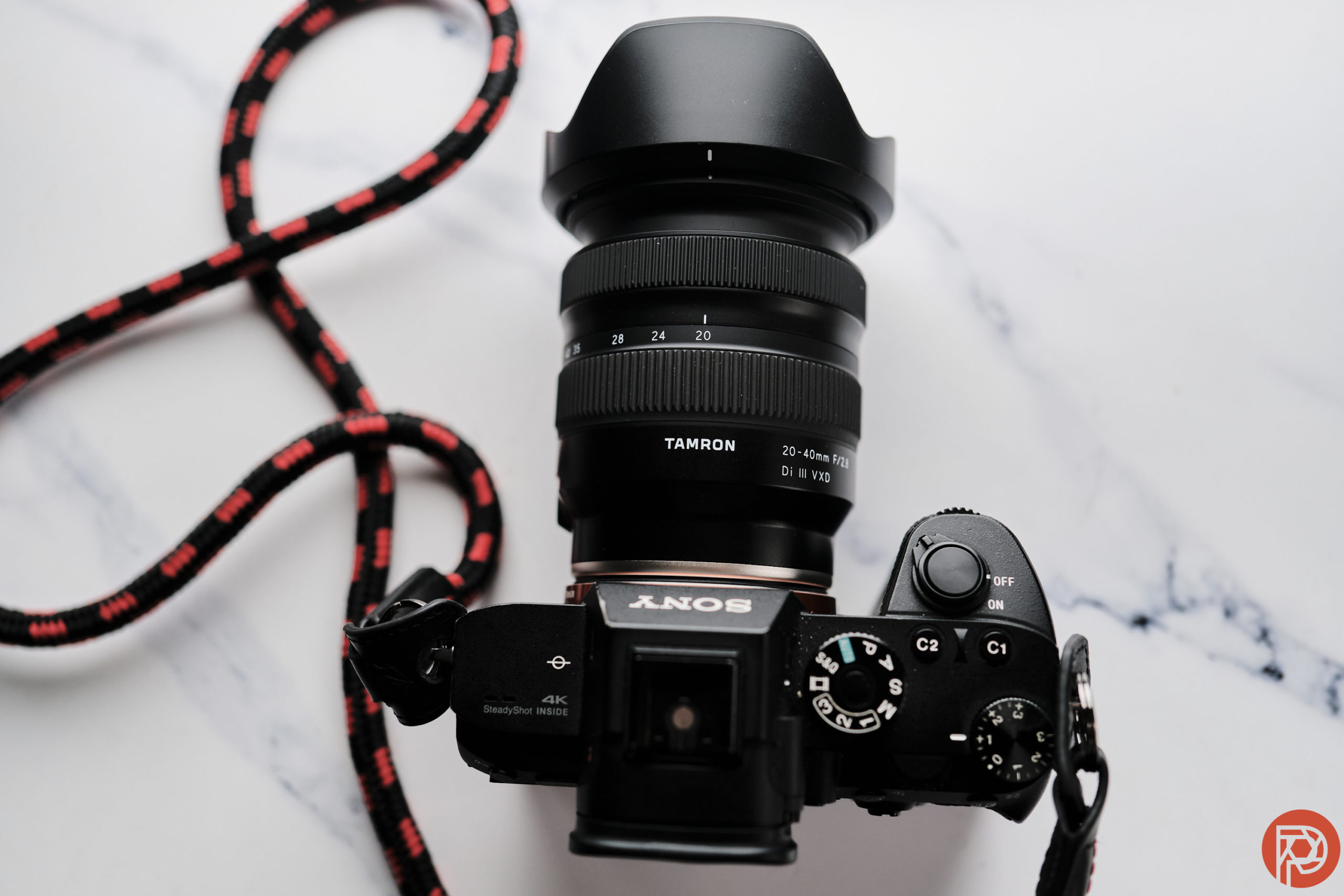Sony cameras have a ton of small lenses that are available to them. In fact, you could say that they’re spoiled for choice. But only a few are really worth being called the best. Believe it or not, they all don’t have to be incredibly expensive either. We’re all looking for fantastic image quality, character, and solid build quality. For years, people didn’t think that you could have all that together. But now, you can! Here are the best small lenses for Sony cameras!
The Phoblographer may receive affiliate commission payments for links clicked in this article upon making a purchase. This article is presented in partnership with Tamron.
Table of Contents
How We Selected the Best Small Lenses for Sony Cameras
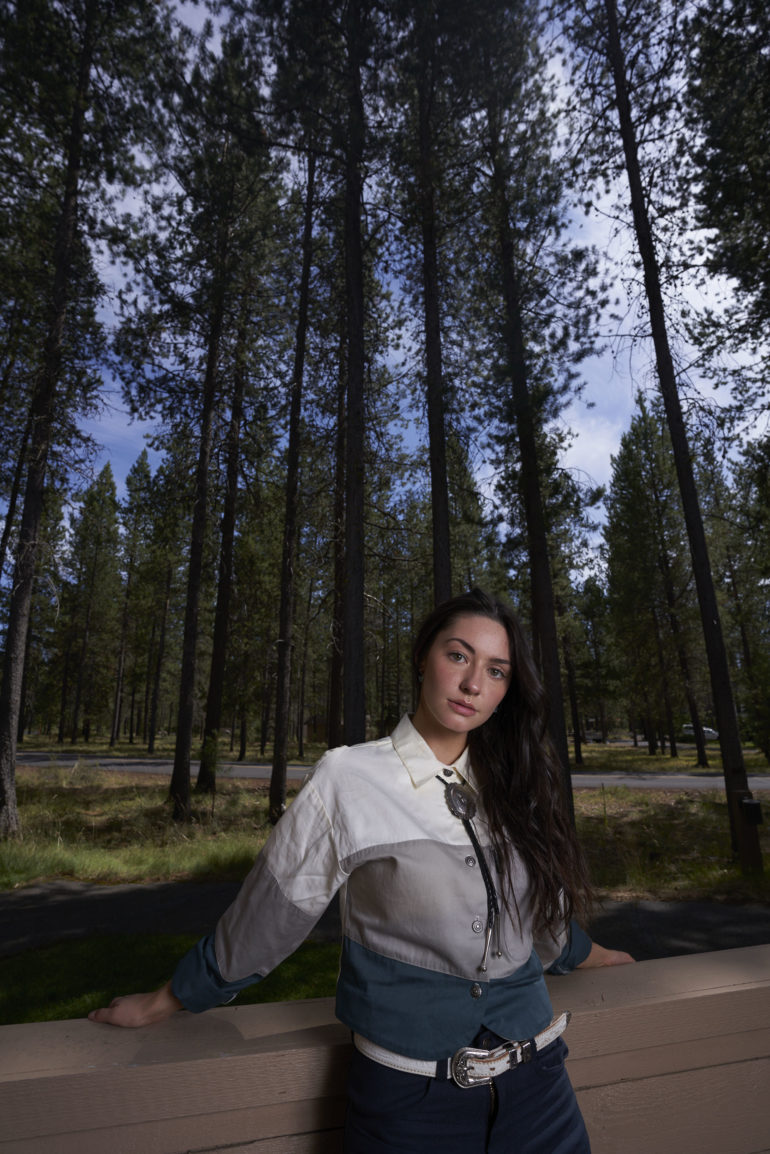
Here’s some insight into how to use this guide to the best small lenses for Sony Cameras:
- The Phoblographer’s various product round-up features are done in-house. Our philosophy is simple: you wouldn’t get a Wagyu beef steak review from a lifelong vegetarian. And you wouldn’t get photography advice from someone who doesn’t touch the product. We only recommend gear we’ve fully reviewed in these roundups.
- If you’re wondering why your favorite product didn’t make the cut, there’s a chance it’s on another list. If we haven’t reviewed it, we won’t recommend it. This method keeps our lists packed with industry-leading knowledge. Some of our stories include affiliate links. If you buy something through one of these links, we may earn an affiliate commission.
- This guide is sponsored by Tamron. However, just because it’s sponsored doesn’t at all question our authenticity. Tamron’s autofocus is often much better than competitors at similar price points. They also add full weather resistance to their products. On top of that, their image quality is really unique with a signature look that many photographers can get behind.
- So what makes a lens get onto our list of the best small lenses for Sony cameras? There are a few things! It starts with ergonomics and build quality. We’re selecting lenses that have weather resistance because of the lasting durability they offer. That means that you’re getting more bang for your buck. Image quality is also certainly important. And lastly, it’s all about affordability. Worried about autofocus? You shouldn’t be. Sony is a partial owner of Tamron, so the autofocus algorithms are often shared.
- The products in this list of the best small lenses for Sony cameras. We also shot all the images ourselves.
TAMRON NOMENCLATURE
Here are some common Tamron terms in their lens naming and what they mean.
- Di: Tamron Di (Digitally Integrated) lenses are performance-optimized for digital cameras. Lenses with the nomenclature Di are lenses for DSLRs featuring full-frame sensors; Di II for DSLRs with APS-C sensors; Di III for mirrorless cameras with full-frame sensors; and Di III-A for mirrorless cameras with APS-C sensors.
- G1 or G2: First or second generation of a particular Tamron lens.
- VC: (Vibration Compensation Image Stabilization System) Tamron’s VC uses a proprietary actuator and algorithms to deliver an extremely stable viewfinder image with excellent tracking. The 3-coil system electromagnetically drives the lens element that compensates for vibration, which glides smoothly on three balls with little friction. Several lenses offer different modes for panning and video shooting. VC can also be customized with the TAP-In Console or Tamron Lens Utility. VC should always be turned off when using the lens on a tripod.
- VXD: (Voice-Coil eXtreme torque Drive) The VXD AF Drive provides the highest levels of autofocus speed and precision in Tamron’s long history. It is Tamron’s first-ever linear motor focus mechanism for stunningly fast and accurate auto-focusing. Two VXD units are arranged in a floating system and operated simultaneously via electronic control to achieve excellent optical performance at all shooting distances near and far. Focus tracking is vastly improved for sports and racing photography.
- RXD: (Rapid eXtra-silent Drive) The RXD stepping drive uses an actuator to precisely control the rotational angle of the motor, allowing it to directly drive the focusing lens without passing through a reduction gear. A sensor that accurately detects the position of the lens enables high-speed and precise AF, which is ideal when shooting moving subjects or video.
Our Favorite: TAMRON 20-40mm f2.8 Di III VXD
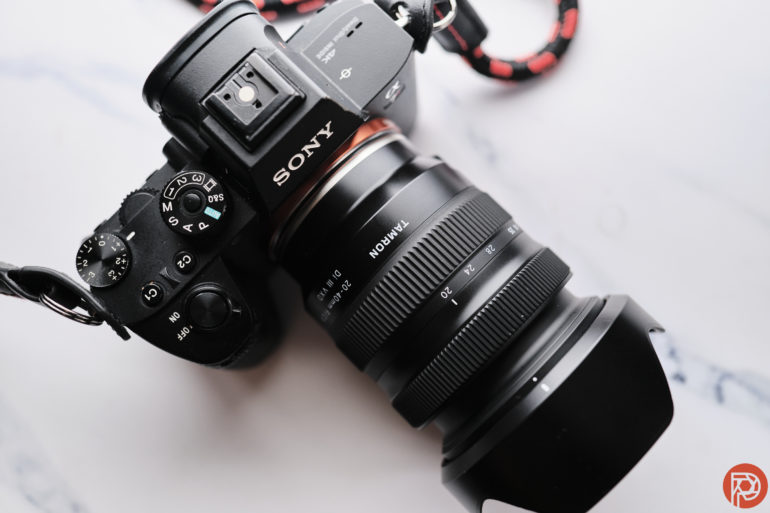
Tech Specs
These specs are taken from LensRentals
| Angle of View | 94.5 to 56.8° |
| Aperture Blades | 9, Rounded |
| Autofocus | Autofocus |
| Brand | Tamron |
| Compatibility | Full Frame |
| Filter Size | 67.0mm |
| Focal Length | 20.0-40.0 |
| Hood Included | Yes |
| Image Stabilization | No |
| Item Type | Lens |
| Lens Type | Wide Angle and Normal Range |
| Macro Reproduction Ratio | 1:3.8 |
| Max Aperture | 2.8 |
| Maximum Magnification | 0.26x |
| Mfr. Model Number | A062 |
| Minimum Aperture | Unknown |
| Minimum Focusing Distance | 0.6feet |
| Mount | Sony E |
| Optical Design | Groups/Elements11/10421Low-Dispersion ElementsGlass-Molded Aspherical ElementsHybrid Aspherical Elements |
| Physical | Diameter (o x L)3.0 × 2.9″0.8 lb.Weight |
Why We Like It
- Fast autofocus
- Weather resistance is class leading
- Beautiful colors
- Very nice bokeh
- Fantastic for food photography
- Lightweight and small
- Very affordable
- Subdued onion bokeh
What We Think
We’re choosing the Tamron 20-40mm f2.8 Di III VXD for a few reasons. It’s insanely small, weather resistant, feels more premium, has a constant f2.8 aperture, and offers a very useful set of focal lengths. All of Tamron’s lenses focus quickly on Sony cameras, but this one really stands out overall.
Here are the conclusions in our review of the lens as well as a sample image gallery.
The Tamron 20-40mm f2.8 Di III VXD is incredibly capable of doing everything its predecessor could and more. The company offers a fairly robust set of wide-angle lenses at incredibly affordable costs. While the 17-28mm gives a wide to semi-wide field of view, the Tamron 20-40mm f2.8 goes from wide to normalish. This could accompany the Tamron 35-150mm f2-2.8 to tackle pretty much all your needs. On top of that, it’s got weather resistance and it’s not at all heavy. In fact, it’s so light that you’d easily want to take it everywhere with you.
To boot, it sports innovative features like the built-in USB-C port that lets you update the firmware easily. While it’s a great lens for documentary shooting and it boasts great image quality, I think it’s competing pretty hard with a lot of other products. For starters, there’s the Tamron 17-28mm f2.8. Then Sigma has variants, and so too does Sony.




4 Other Great Small Lenses for Sony Cameras
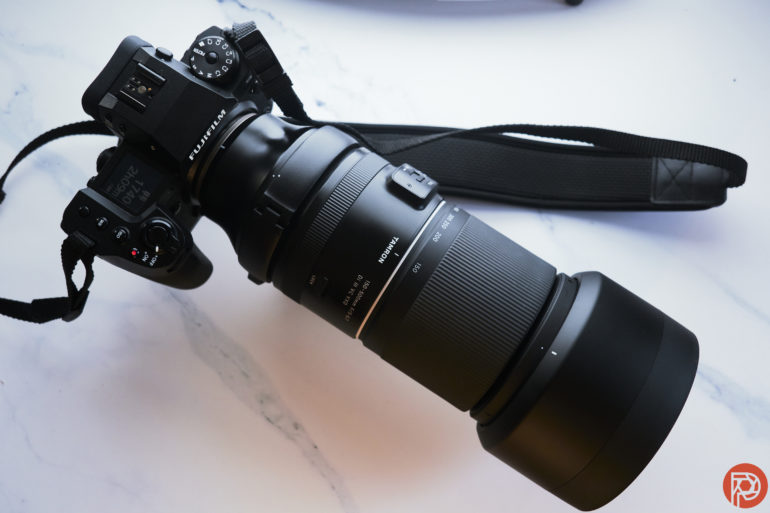
Here are a bunch of other great options that photographers will enjoy. The rest of this list includes a few other small lens options for Sony cameras. All of these lenses have given us great images, and there are sample image galleries from each lens.
Tamron 20mm f2.8 Di III OSD 1:2 Macro
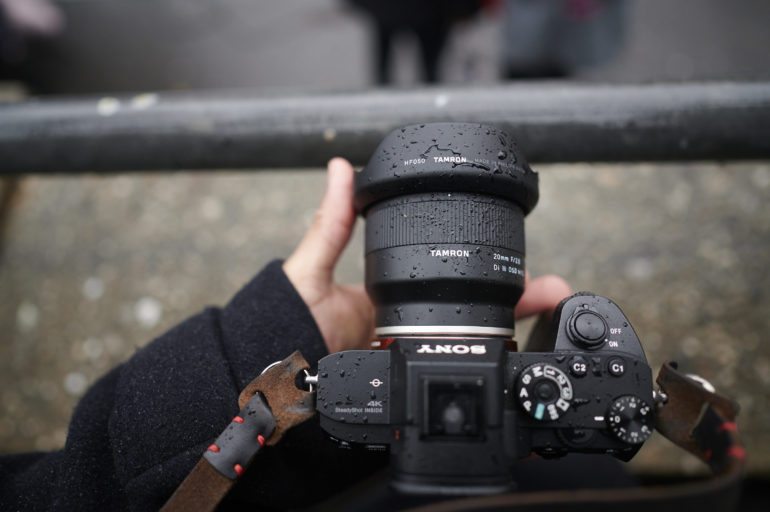
Tech Specs
| Model | F050 |
|---|---|
| Focal Length | 20mm |
| Maximum Aperture | F/2.8 |
| Angle of View (diagonal) | 94°30′(for full-frame mirrorless format) |
| Optical Construction | 10 elements in 9 groups |
| Minimum Object Distance | 0.11m (4.3 in) |
| Maximum Magnification Ratio | 1:2 |
| Filter Size | Φ67mm |
| Maximum Diameter | Φ73mm |
| Length* | 64mm (2.5 in) |
| Weight | 220g (7.8 oz) |
| Aperture Blades | 7 (circular diaphragm)** |
| Minimum Aperture | F/22 |
| Standard Accessory | Flower-shaped hood, Lens caps |
| Compatible Mounts | Sony E-mount |
In our review, we state:
This lens has great image quality with nice bokeh (when possible), very good sharpness, and beautiful colors. On top of all that, it’s lightweight and built like a tank. Best of all, the price and portability are things you’ll be very happy with.
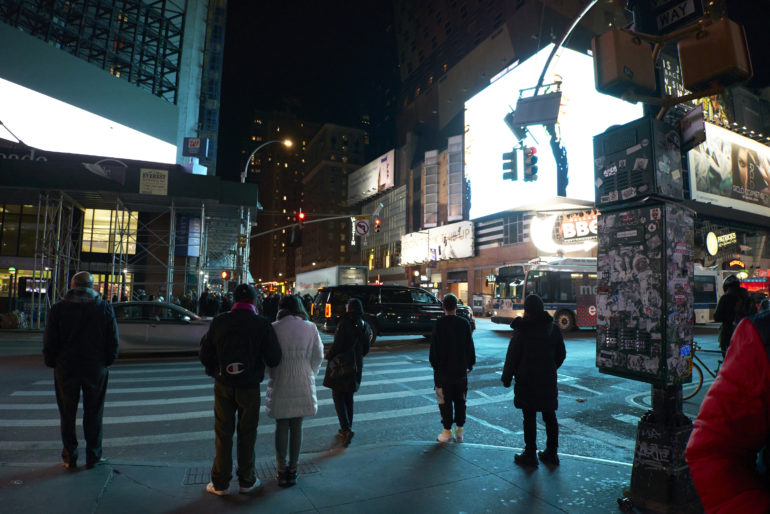



Tamron 24mm f2.8 Di III OSD 1:2 Macro
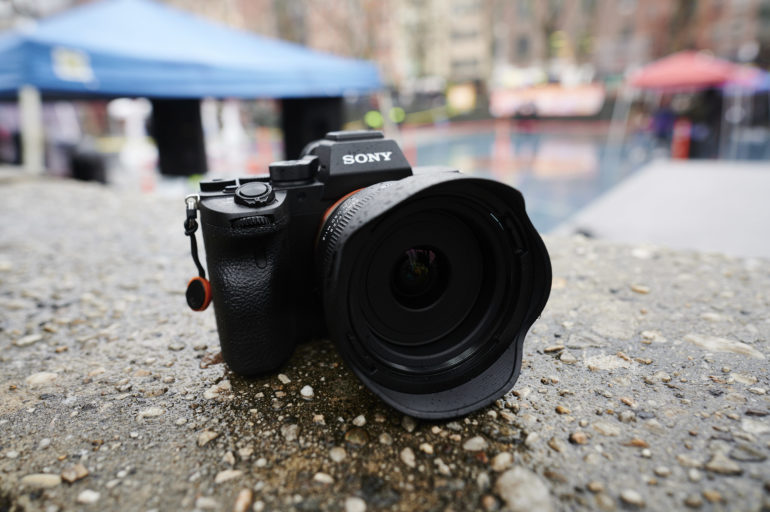
Tech Specs
| Model | F051 |
| Focal Length | 24mm |
| Maximum Aperture | f2.8 |
| Angle of View (diagonal)* | 84°04′ |
| Optical Construction | 10 elements in 9 groups |
| Minimum Object Distance | 4.7 in (0.12m) |
| Maximum Magnification Ratio | 1:2 |
| Filter Size | Ø67mm |
| Maximum Diameter | Ø73mm |
| Length** | 64mm (2.5 in.) |
| Weight | 7.6 oz (215g) |
| Aperture Blades | 7 (circular diaphragm)** |
| Minimum Aperture | f22 |
| Standard Accessories | Lens hood (Flower-shaped), Lens caps |
| Compatible Mounts | Sony E-mount |
| * for full-frame mirrorless format | |
| ** Length is the distance from the front tip of the lens to the lens mount face. | |
| *** The circular diaphragm stays almost perfectly circular up to two stops down from maximum aperture. |
Colors rendered by the Tamron 24mm f2.8 Di III OSD M1:2 are vibrant and true to life. You’ll be consistently rewarded with pleasing images as long as they are properly lit and your white balance is set correctly.




Tamron 35mm f2.8 Di III OSD 1:2 Macro
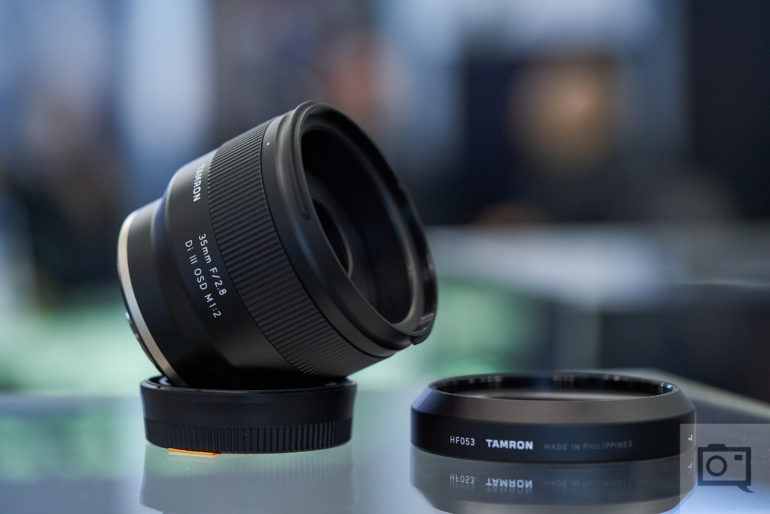
Tech Specs
| Model | F053 |
| Focal Length | 35mm |
| Maximum Aperture | f2.8 |
| Angle of View (diagonal)* | 63°26′ |
| Optical Construction | 9 elements in 8 groups |
| Minimum Object Distance | 5.9 in (0.15m) |
| Maximum Magnification Ratio | 1:2 |
| Filter Size | Ø67mm |
| Maximum Diameter | Ø73mm |
| Length** | 64mm (2.5 in.) |
| Weight | 7.4 oz (210g) |
| Aperture Blades | 7 (circular diaphragm)** |
| Minimum Aperture | f22 |
| Standard Accessories | Lens hood (Cap-type), Lens caps |
| Compatible Mounts | Sony E-mount |
| * for full-frame mirrorless format | |
| ** Length is the distance from the front tip of the lens to the lens mount face. | |
| *** The circular diaphragm stays almost perfectly circular up to two stops down from maximum aperture. |
In our review, we state:
Images produced by the Tamron 35mm f2.8 Di III OSD M1:2 (Model F053) are outstanding overall. Like most of their other Sony FE Mount lenses, you’re getting quality optics at an affordable price point.


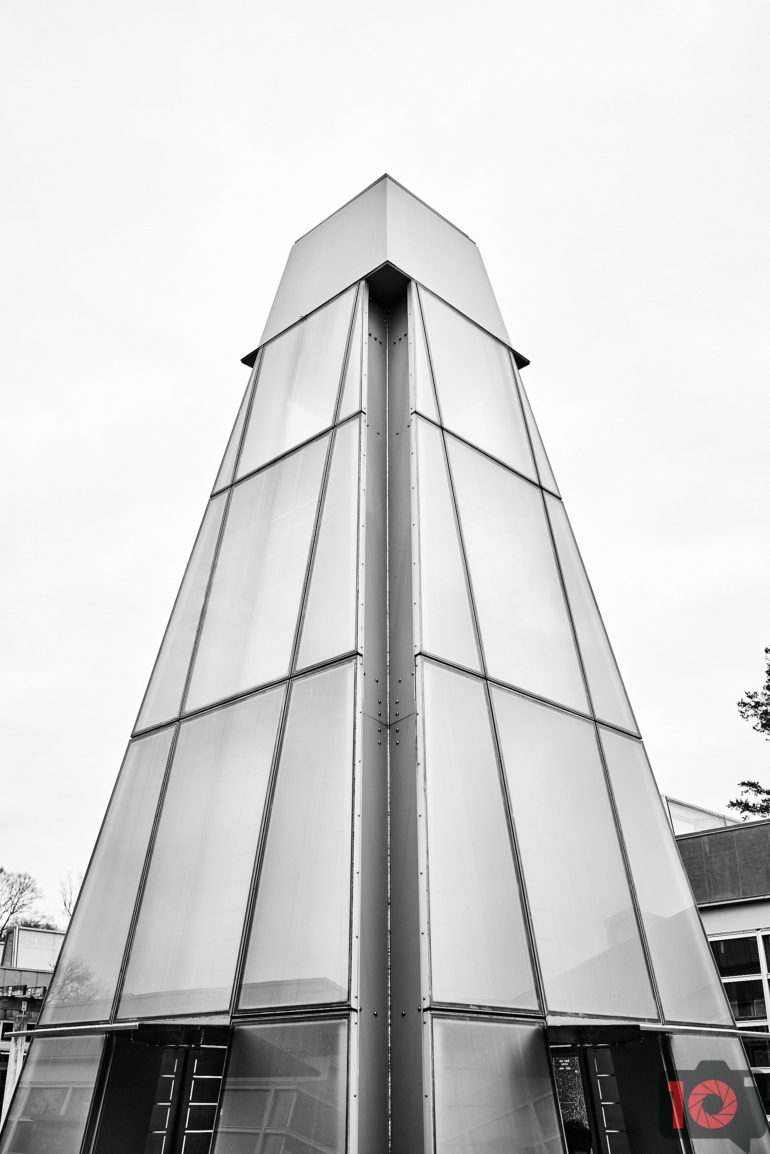

Tamron 17-28mm f2.8 Di III RXD
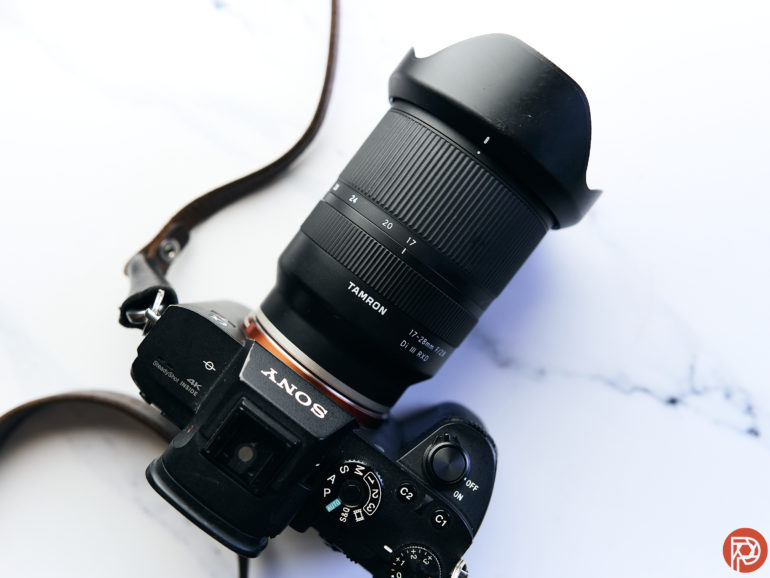
Tech Specs
| Angle of View | 103° 41’ to 75° 23’ |
| Aperture Blades | 9, Rounded |
| Autofocus | Autofocus |
| Brand | Tamron |
| Compatibility | Full Frame |
| Diameter | 2.9″ |
| Filter Size | 67.0mm |
| Focal Length | 17.0-28.0 |
| Groups/Elements | 13/13 |
| Hood Included | Yes |
| Image Stabilization | No |
| Item Type | Lens |
| Length | 3.9″ |
| Lens Type | Wide Angle |
| Macro Reproduction Ratio | 1:5.2 |
| Max Aperture | 2.8 |
| Maximum Magnification | 0.1923 to 0.1666x |
| Minimum Aperture | 22.0 |
| Minimum Focusing Distance | 0.6feet |
| Mount | Sony E |
| Weight | 0.9 lb. |
In our review, we state:
The sharpness of the Tamron 17-28mm f2.8 Di III RXD is accentuated and truly realized when the camera you’re using also is firing a flash. In this case, we’re displaying the Tamron 17-28mm f2.8 Di III RXD’s sharpness with a flash fired from the Profoto B10. The specular highlights really showcase how sharp this lens can be. In my experience, this is almost G Master level of sharpness. It’s better than G series for sure! That sharpness with a flash will matter most to the photographers who need to use a flash for studio-style work. But if you’re shooting landscapes, travel work, or other types of work then you’re going to be adequately satisfied.

